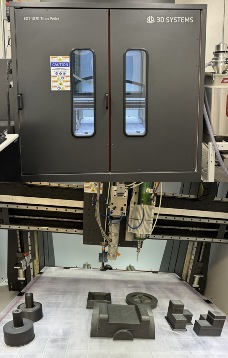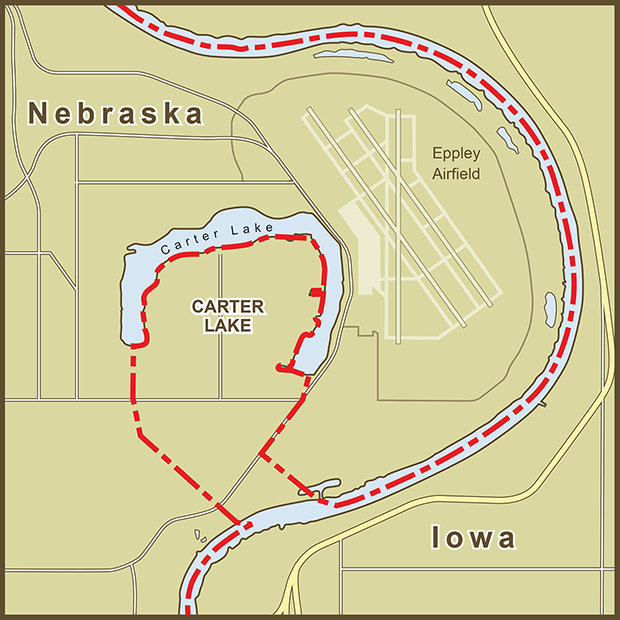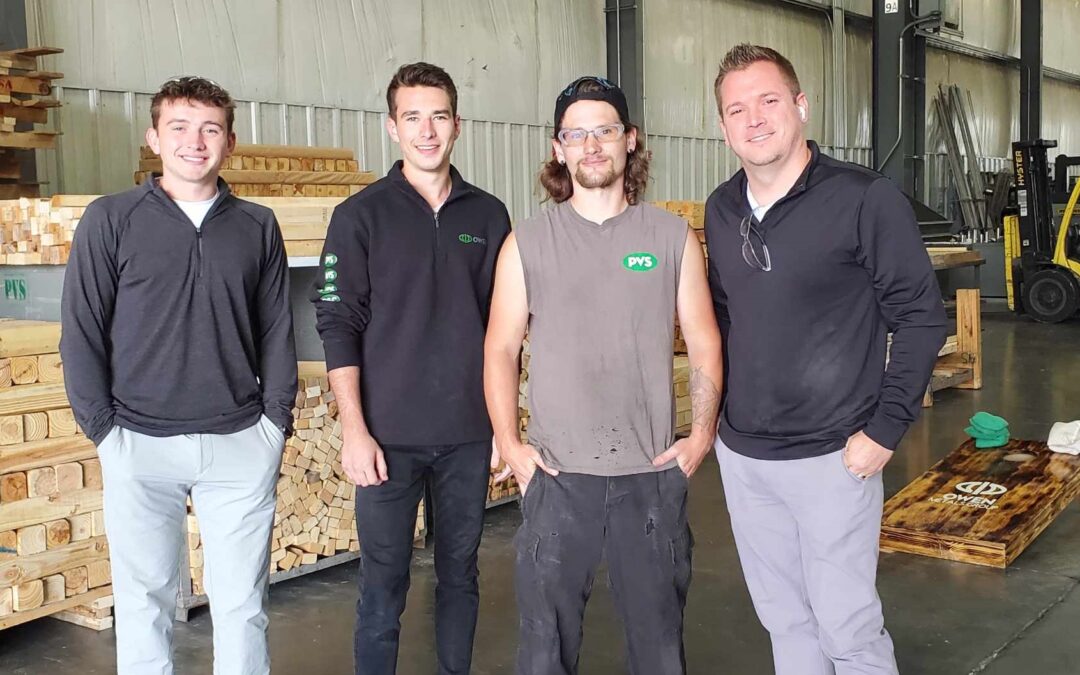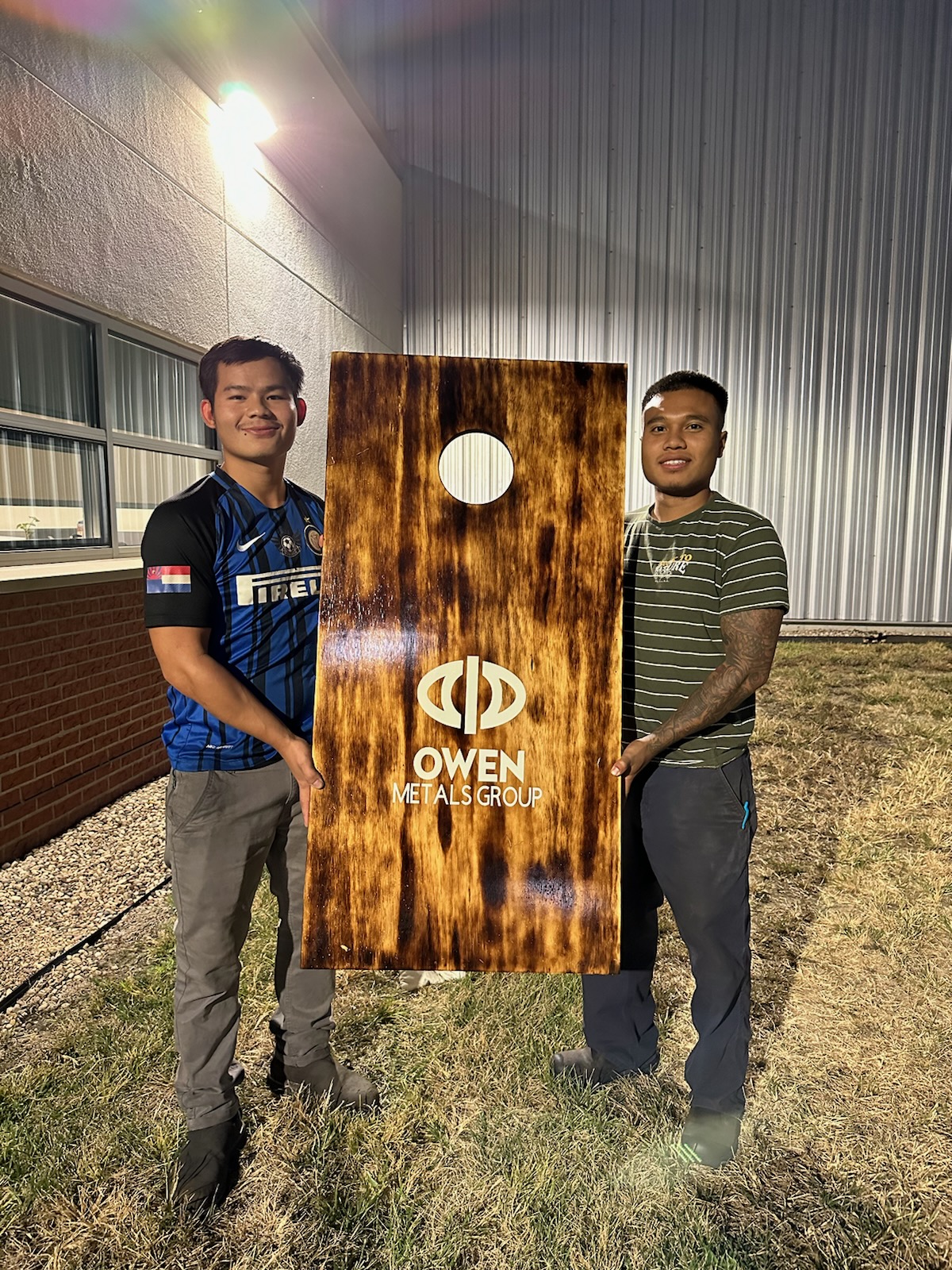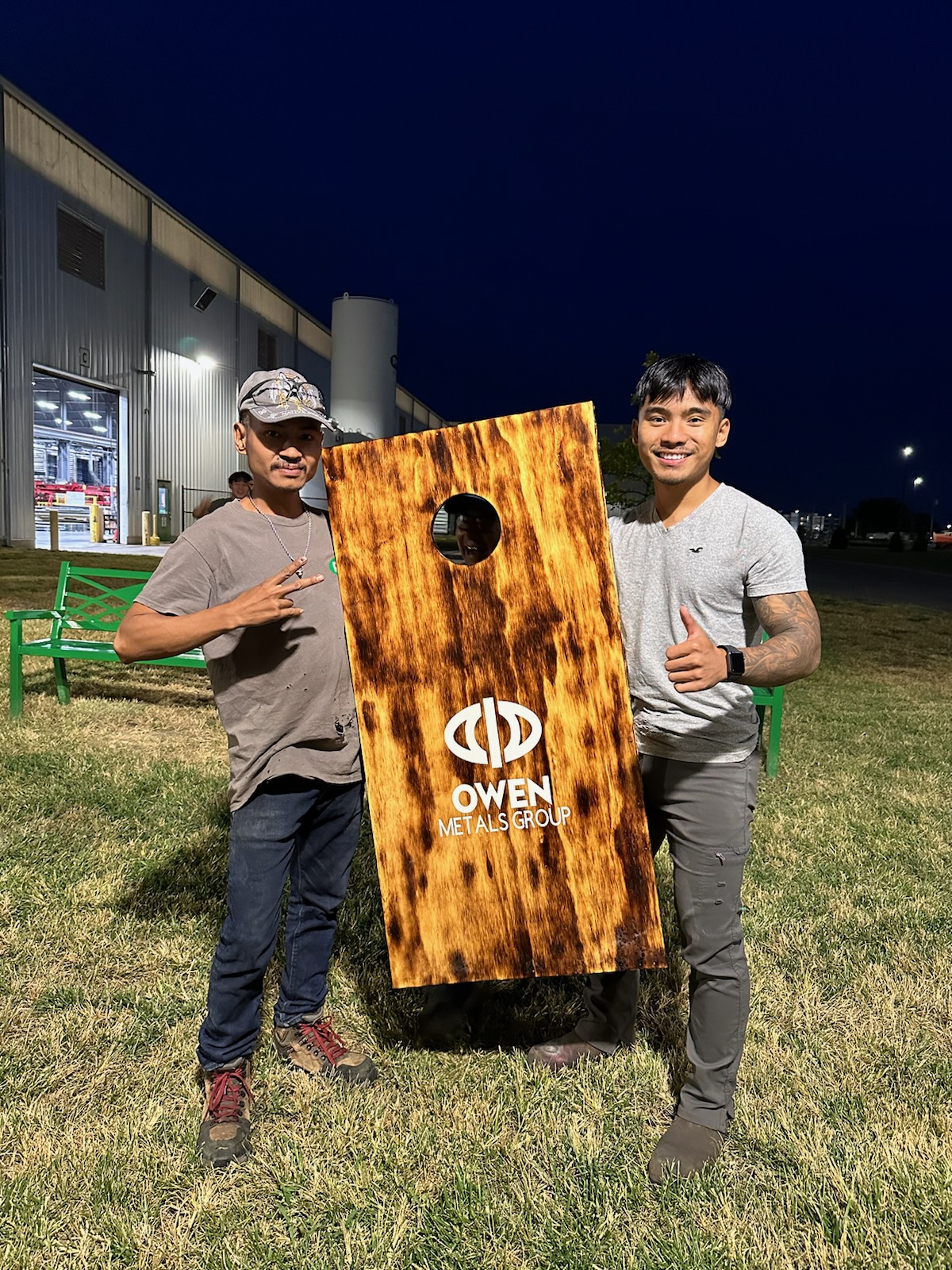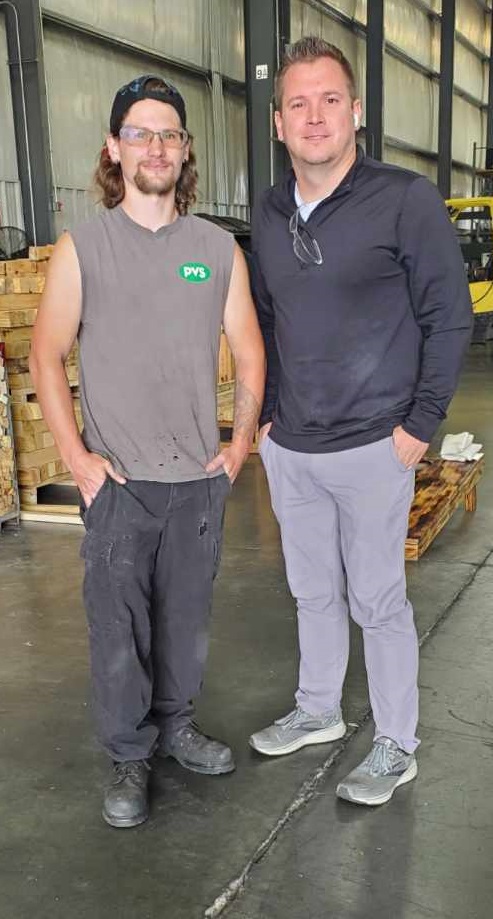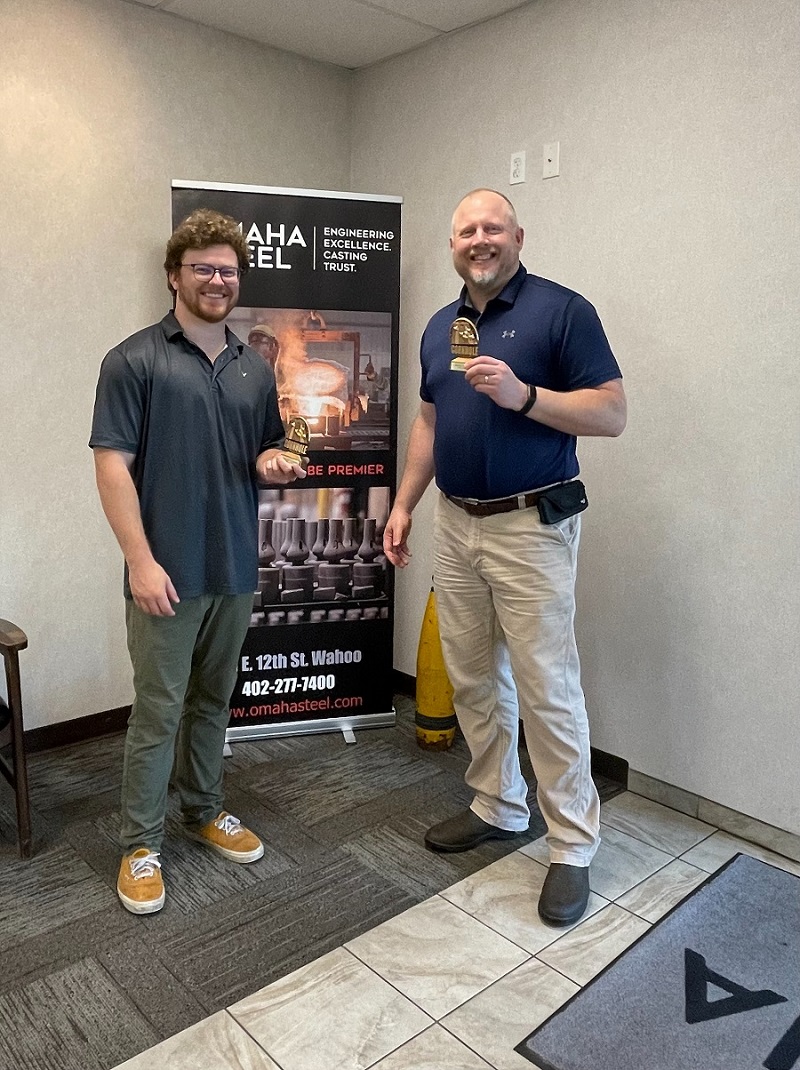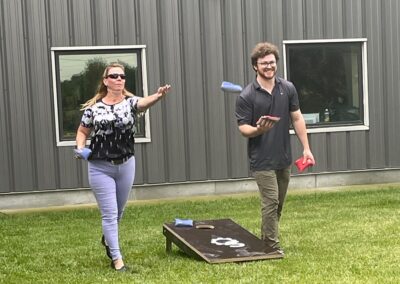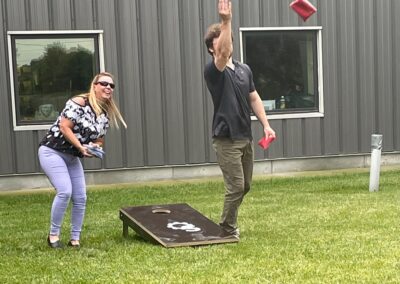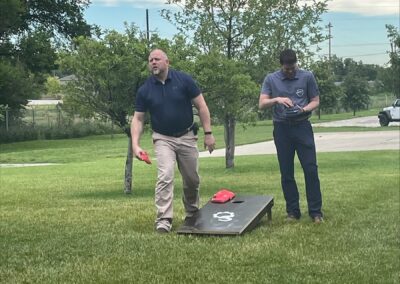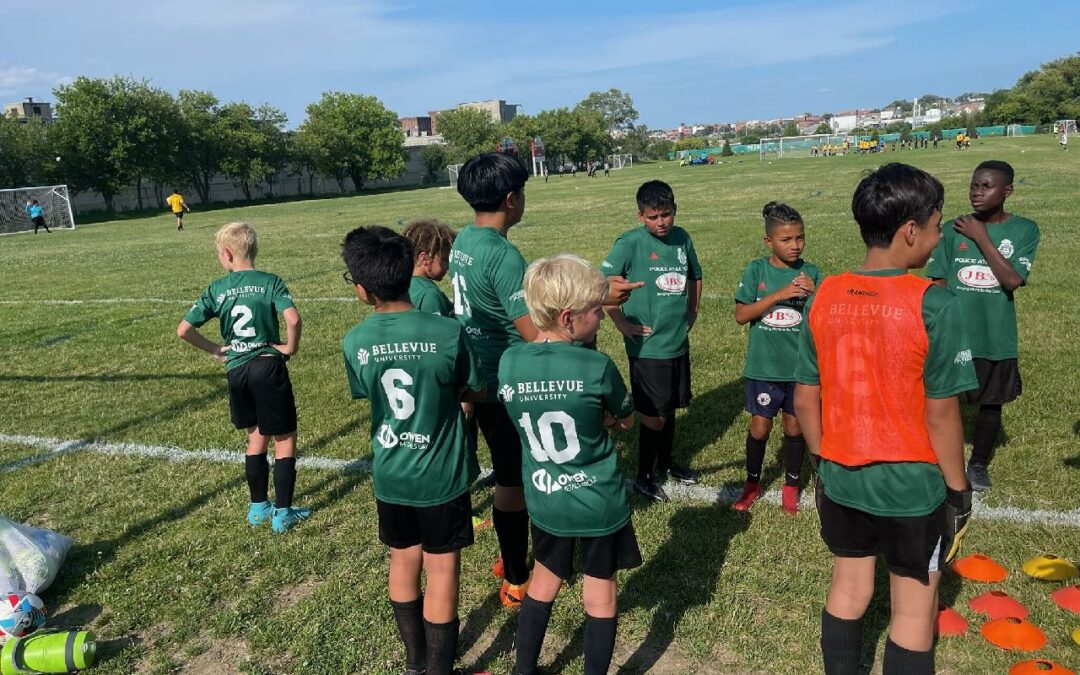Omaha Steel is excited to announce the new EXT 1070 Titan 3D printer from 3D Systems! This advanced machine combines pellet-fed extrusion and CNC technology, allowing us to create durable patterns and core boxes for the no-bake sand casting process directly from customer-supplied CAD files. With this investment, we are now able to bring the pattern-making process in-house, cutting down on lead times significantly. Historically, third-party lead times have been in the 6–8-week range, sometimes extending to 12 weeks plus shipping. Now, we can turn CAD files into steel castings in the same timeframe it used to take just to receive tooling from a third-party. This is a game-changer for us!
Company
We at Owen are proud to be a part of this community since 1938!
Article credit: Bailey Cichon/The Gazette
Curious Iowa: Why does Iowa have a city west of the Missouri River?
An 1877 flood was the catalyst for a recurring boundary dispute with Nebraska
Darrel Wrider of Cedar Rapids is planning a trip to Omaha this summer. And while he’s there, he wants to visit Carter Lake, the only Iowa city that’s located west of the Missouri River. You have to drive through Nebraska to get there. Wrider wondered how this town came to be. He sent his question to Curious Iowa, a Gazette series that answers readers’ questions about our state, its people and culture.
We set out to learn more about this exclave — a portion of a state’s territory that’s not connected to it by land.
The area we know today as the city of Carter Lake was originally part of Council Bluffs. Council Bluffs was founded in 1853, when a section of the Missouri River, called Saratoga Bend, wrapped around the area.
When Iowa was admitted into the union in 1846, its western border was identified as the middle of the main channel of the Missouri River. Similarly, Nebraska’s eastern border was identified in the same way when it was admitted in 1867. In March 1877, a major flood shifted the Missouri River channel and cut off Saratoga Bend. Instead of water going around the bend, the new channel connected the start and end of the bend with a direct path. This created an oxbow lake.
Pottawattamie County Historical Society historian Troy Stolp is an expert on this story. His curiosity around Carter Lake dates back to his childhood and he wrote his master’s thesis on this topic. Stolp said the Carter Lake area was considered the sixth district of Council Bluffs. Unfortunately, the flood left the sixth district on the other side of the river, separated from electricity, water and the city’s fire department.
“Over the next couple of years, Omaha began to provide those things because there was one bridge over the Missouri between Council Bluffs and Omaha,” Stolp said. “And the travel time for say a fire call was 45 minutes from Council Bluffs.”
The separation also contributed to fractures in representation at the city council level. Sixth district representatives would have to leave early for council meetings because they had to take a ferry across the river.
“There were often times in the records where the representatives from Carter Lake would get to the city council meeting … and Council Bluffs did not wait for them and the meeting would be over … and that became an issue later on.”
When did it become Carter Lake?
Map of Carter Lake, Iowa circa 1964 (Historical Society of Pottawattamie County)
Map of Carter Lake, Iowa circa 1964 (Historical Society of Pottawattamie County)
The area was known throughout the years as “Cut Off Lake,” “Lake Nakoma” and “Lake Nakomis.”
“Cut Off Lake” was a striking but accurate description for how the district was treated after the flood. Despite paying the same taxes as Council Bluffs residents, residents of the sixth district didn’t have running water and electricity. To top it off, the area flooded regularly.
Carter Lake’s first city attorney, DeVere Watson, reportedly said that the district was “cut off for all purposes except that of collecting taxes.”
Despite the flooding, Carter Lake became an entertainment destination and the home of heavy industry, in part thanks to Omaha-area industrialist Levi Carter. Czech and Danish immigrants came to work in Carter’s factories. Stolp said with the immigrants came their nightlife, including gambling and brothels.
Frustrations with Council Bluffs came to a head in 1927 when sixth district residents divorced Council Bluffs and formed the village of Carter Lake. The Omaha Daily News reported on July 15, 1926 that property owners paid $25,000 in taxes each year to Council Bluffs despite not receiving fire or police protection, nor public schools above the eighth grade or other benefits.
When the secession proceedings were announced, a separate attempt to secede from the state of Iowa was pending before the Nebraska and Iowa joint boundary commission. If approved, Carter Lake would join Omaha.
Stolp said there was outcry over the idea in the Omaha papers’ op-ed sections. The people of Omaha rejected Carter Lake due to its nightlife, despite many Omaha residents traveling over the border to indulge in their vices.
In the book “Carter Lake: A Slice of Iowa in Nebraska,” author John Schreier described it as a “gritty border town at night” where “enterprising merchants chose to capitalize on the community’s murky legal status.”
For example, when Iowa repealed prohibition before Nebraska, Carter Lake was perfectly positioned to serve Nebraskans looking for alcohol. Carter Lake also was home to the notorious Chez Paree casino nightclub.
“Histories describe it as one of the largest and most active casinos of the time between Chicago and Reno,” Schreier wrote.
Which state rightfully owns the land?
The shifting Missouri River channel was a problem between Iowa and Nebraska because both states’ borders were set as the middle of the river’s main channel.
The U.S. Supreme Court ruled in 1892 that if a river shifted suddenly, through what’s called “avulsion,” there is no effect on the boundary. If a river gradually shifts, through what’s called “accretion,” the boundary is left in the center of the channel, despite one side gaining land over time.
In 1943, the Iowa-Nebraska Boundary Compact defined the boundary as fixed in the center of the Missouri River channel at all points except Carter Lake. In 1972, the Supreme Court reviewed the issue of the Iowa-Nebraska border, but again sided with Iowa.
More than a century since the historic flood, the idea of Carter Lake becoming part of Nebraska continues to be floated.
The issue resurfaced in the 1990s when former Iowa Sen. Michael Gronstal, D-Council Bluffs, reported that he’d knocked on every door in Carter Lake while campaigning and no resident told him they wanted to be a Nebraskan.
Stolp said residents of the town of 3,791 people (as of the 2020 census) have echoed that sentiment to him as well.
“It’s such a unique area because … they’re like stepchildren that found each other and grew up together,” Stolp said.
“Even though there was a boundary dispute, in the end the boundary means nothing and … it’s a symbiotic relationship of all of the communities, despite the disputes.”
This year, Owen had it’s first bags tournament! We had 17 teams for first shift, and 6 teams for 2nd shift.
Winners for 1st shift:
Chris Schroeder and Ronnie Main in 1st place
Kaden Conrad and Stephen Fox in 2nd place.
2nd shift winners:
1st place: Eh Soe and Ehkue Htoo
2nd place: Than Win and Vichai Thomo
Fierce competition and tons of fun! Congratulations to our winners!
FOR IMMEDIATE RELEASE
(Carter Lake, Iowa, September 1, 2023) – Owen Metals Group announced today the opening of their new Paxton & Vierling Finishing (PVF) facility in Carter Lake, Iowa. The company’s latest, most advanced line combines ten years of powder coating experience at their Northern Plains Finishing (NPF) division in Casselton, North Dakota, with the latest innovations in coating technologies. “Our new PVF line significantly increases finishing capacity while reducing costs for our customers in the lower Midwest,” said Tyler Owen, CEO/President of Owen Holdings Co.
The new system integrates part-specific instructions driven by barcoded hooks that travel with the parts. These hooks trigger automation, including four robots that perform custom paint applications. PVF line robots spray super-cooled powder with a technology that significantly increases the powder transfer rate. The PVF line integrates several borrowed and upgraded facets of the NPF system that have proven successful, including the 5-stage wash pretreatment system and a 10-gun auto paint booth.
The new PVF system features one of the lengthiest parts hanging areas of any paint line. The extended hanging space, coupled with the rise and fall of the conveyor line, allows parts to hang much closer than on a traditional monorail line. Owen Metals Group President Keith Siebels said, “We are also pleased that the unique design of our new PVF line requires fewer team members to operate, and those working the line can be in a more comfortable position throughout the production process.”
ABOUT OWEN METALS GROUP
Owen Metals Group is a privately held company headquartered in Omaha, Nebraska. Founded in 1885 as Paxton & Vierling Iron Works, the company is a well-established leader in the steel industry. Owen Metals Group produces the highest quality parts and steel castings, which are laser cut, formed, machined, and painted to spec for the most advanced manufacturers in the country. The company supplies complex structural fabrication systems to the most exacting standards through its subsidiary, Owen Industries.
Congratulations to our Spring/Summer 2023 Cornhole Champions at Omaha Steel! Our final two teams played for the championship title today. The team of Travis Toline and Joe Mader won the final game against Chase White and Paula Mimick with a final score of 21-10. Well done everyone! We look forward to a fun and competitive Fall tournament in September – so keep practicing!
Owen loves to support kids, this year we were sponsors for the PACE program that helps more than 1100 kids get free and reduced access to soccer teams for the summer.


